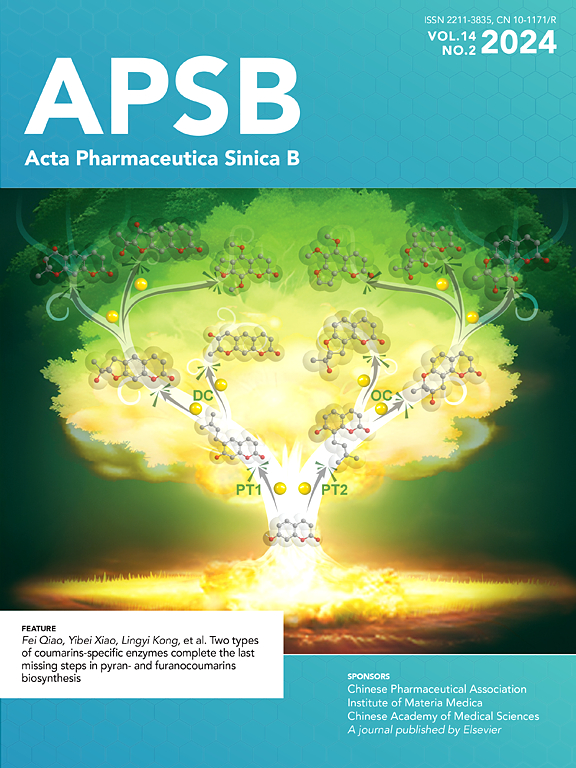Gut microbiota-derived tryptophan metabolites regulated by Wuji Wan to attenuate colitis through AhR signaling activation
IF 14.7
1区 医学
Q1 PHARMACOLOGY & PHARMACY
引用次数: 0
Abstract
Disruption of the intestinal mucosal barrier caused by gut dysbiosis and metabolic imbalance is the underlying pathology of inflammatory bowel disease (IBD). Traditional Chinese medicine Wuji Wan (WJW) is commonly used to treat digestive system disorders and showed therapeutic potential for IBD. In this interdisciplinary study, we aim to investigate the pharmacological effects of WJW against experimental colitis by combining functional metabolomics and gut-microbiota sequencing techniques. Treatment with WJW altered the profile of the intestinal microbiota and notably increased the abundance of Lactobacillus, thereby facilitating the conversion of tryptophan into indole-3-acetic acid (IAA) and indoleacrylic acid (IA). These indole derivatives activated the aryl hydrocarbon receptor (AhR) pathway, which reduced colonic inflammation and restored the expression of intestinal barrier proteins. Interestingly, the beneficial effects of WJW on gut barrier function improvement and tryptophan metabolism were disappeared in the absence of gut microbiota. Finally, pre-treatment with the AhR antagonist CH-223191 confirmed the essential role of IAA-mediated AhR activation in the therapeutic effects of WJW. Overall, WJW enhanced intestinal barrier function and reduced colonic inflammation in a murine colitis model by modulating Lactobacillus–IAA–AhR signaling pathway. This study provides novel insights into colitis pathogenesis and presents an effective therapeutic and preventive approach against IBD.

求助全文
约1分钟内获得全文
求助全文
来源期刊

Acta Pharmaceutica Sinica. B
Pharmacology, Toxicology and Pharmaceutics-General Pharmacology, Toxicology and Pharmaceutics
CiteScore
22.40
自引率
5.50%
发文量
1051
审稿时长
19 weeks
期刊介绍:
The Journal of the Institute of Materia Medica, Chinese Academy of Medical Sciences, and the Chinese Pharmaceutical Association oversees the peer review process for Acta Pharmaceutica Sinica. B (APSB).
Published monthly in English, APSB is dedicated to disseminating significant original research articles, rapid communications, and high-quality reviews that highlight recent advances across various pharmaceutical sciences domains. These encompass pharmacology, pharmaceutics, medicinal chemistry, natural products, pharmacognosy, pharmaceutical analysis, and pharmacokinetics.
A part of the Acta Pharmaceutica Sinica series, established in 1953 and indexed in prominent databases like Chemical Abstracts, Index Medicus, SciFinder Scholar, Biological Abstracts, International Pharmaceutical Abstracts, Cambridge Scientific Abstracts, and Current Bibliography on Science and Technology, APSB is sponsored by the Institute of Materia Medica, Chinese Academy of Medical Sciences, and the Chinese Pharmaceutical Association. Its production and hosting are facilitated by Elsevier B.V. This collaborative effort ensures APSB's commitment to delivering valuable contributions to the pharmaceutical sciences community.
 求助内容:
求助内容: 应助结果提醒方式:
应助结果提醒方式:


